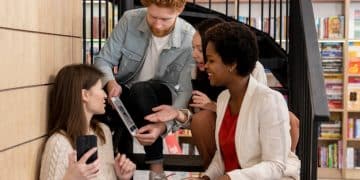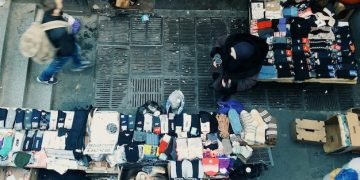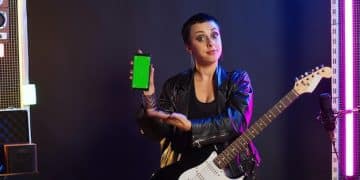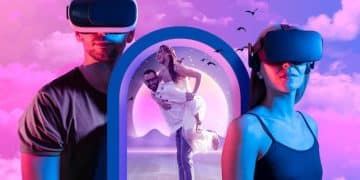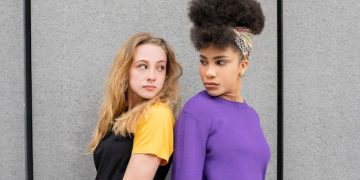Alternative Education US: 3 Unconventional Schools in 2025
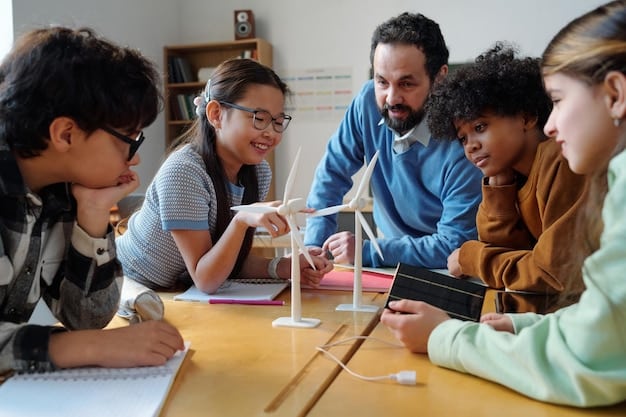
Alternative education in the US is evolving, with schools like the Museum School, Waterside School, and Open Connections pioneering creative, student-centered learning models that emphasize innovation and cater to diverse needs in 2025.
The landscape of alternative education in the US: 3 Unconventional Schools Fostering Creativity and Innovation in 2025 is rapidly changing, with innovative schools emerging to cater to diverse learning styles and needs. These institutions are redefining traditional education by prioritizing creativity, personalized learning, and student empowerment, paving the way for a more engaging and effective educational experience.
What is Alternative Education?
Alternative education represents a departure from conventional teaching methods, offering student-centered approaches that prioritize individualized learning. It emphasizes creativity, critical thinking, and holistic development, addressing diverse needs and learning styles that may not be adequately met in traditional settings.
Key Characteristics of Alternative Education
The principles of alternative education revolve around personalization, experiential learning, and community involvement. These schools often feature smaller class sizes, flexible curricula, and a focus on real-world applications to enhance student engagement and understanding.
Benefits of Alternative Education
Students in alternative education settings frequently demonstrate improved academic performance, increased self-esteem, and a stronger sense of purpose. These environments cultivate a love for learning, fostering creativity and critical thinking skills essential for success in a rapidly evolving world.
- Personalized learning experiences cater to individual student needs.
- Experiential learning connects classroom concepts to real-world applications.
- Stronger student-teacher relationships foster a supportive learning environment.
- Emphasis on creativity and critical thinking skills.
Alternative education offers a dynamic and enriching environment where students can thrive academically, socially, and emotionally, shaping them into well-rounded individuals prepared for future challenges.
The Museum School: Learning Through Exploration
The Museum School in New York City exemplifies an innovative approach to education by integrating museum resources into its curriculum. This unique model allows students to engage with subjects through hands-on exploration and interactive learning experiences, cultivating curiosity and critical thinking.
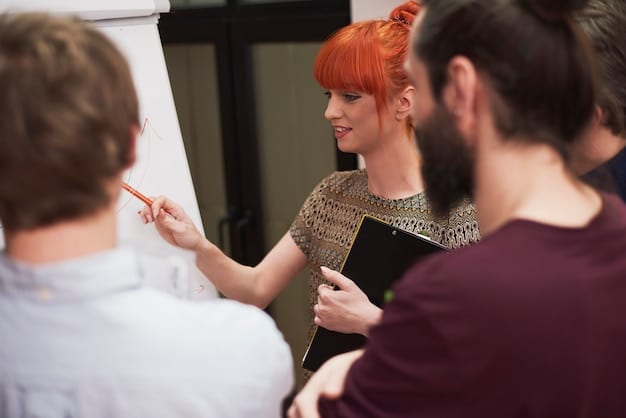
Integrating Museum Resources
The Museum School collaborates with various museums to create immersive learning experiences that transcend traditional classroom boundaries. Students visit museums regularly, participating in curated programs that align with their academic studies, making learning both engaging and memorable.
Curriculum and Pedagogy
The school’s curriculum is designed to promote inquiry-based learning, encouraging students to ask questions, explore different perspectives, and construct their own knowledge. Teachers act as facilitators, guiding students through the learning process and fostering a collaborative environment.
The Museum School employs several strategies to enhance student learning:
- Hands-on museum visits that complement classroom instruction.
- Inquiry-based projects that encourage critical thinking.
- Collaborative activities that promote teamwork and communication.
- Integration of arts and culture into academic subjects.
By leveraging the rich resources of museums, The Museum School provides a dynamic and enriching educational experience that prepares students to become lifelong learners and active participants in their communities.
Waterside School: A Community-Focused Approach
Waterside School in Stamford, Connecticut, distinguishes itself through its commitment to providing high-quality education to underserved children in the community. By focusing on academic excellence, character development, and community engagement, Waterside School empowers its students to achieve their full potential.
Academic Excellence and Character Development
Waterside School aims to equip its students with the knowledge, skills, and values necessary for success in higher education and beyond. The school’s rigorous academic program is balanced with a focus on character development, instilling qualities such as integrity, resilience, and empathy.
Community Engagement and Support
The school actively involves parents, community members, and local organizations in its educational mission. This collaborative approach ensures that students receive holistic support, creating a nurturing environment where they can thrive.
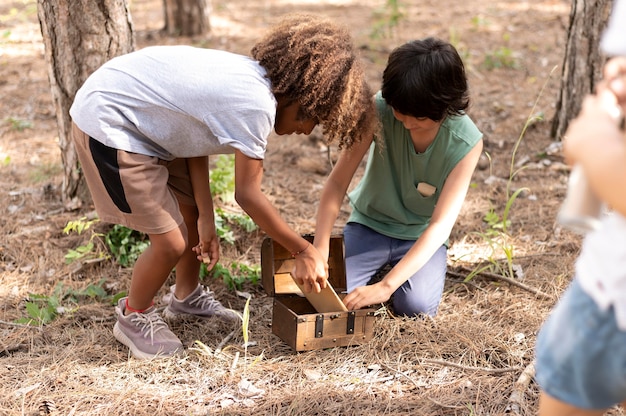
Waterside School fosters student success through:
- Small class sizes that allow for personalized attention.
- A rigorous academic curriculum that prepares students for college.
- Character development programs that instill important values.
- Community engagement initiatives that promote social responsibility.
Waterside School’s community-centered model provides a transformative educational experience for its students, enabling them to overcome challenges, achieve academic success, and become engaged citizens in their communities.
Open Connections: Unstructured Learning and Self-Direction
Open Connections, located in suburban Philadelphia, offers a unique educational environment that embraces unstructured learning and self-direction. This innovative school empowers students to take ownership of their education, fostering independence, creativity, and a lifelong love of learning.
Embracing Unstructured Learning
Open Connections operates on the belief that students learn best when they are free to pursue their interests and passions. The school provides a flexible learning environment where students can explore a wide range of subjects and activities without the constraints of a traditional curriculum.
Fostering Self-Direction and Independence
Students at Open Connections are encouraged to set their own learning goals, manage their time effectively, and take responsibility for their educational progress. This approach cultivates self-direction, critical thinking, and problem-solving skills, preparing students for success in a rapidly changing world.
The key elements of Open Connections’ educational approach include:
- Self-directed learning plans tailored to individual student interests.
- Flexible scheduling that allows students to manage their time effectively.
- A supportive community that encourages exploration and experimentation.
- Opportunities for students to pursue their passions and develop their unique talents.
Open Connections offers a transformative educational experience that empowers students to become independent, creative, and lifelong learners, fostering a deep sense of purpose and a passion for knowledge.
The Future of Alternative Education in the US
The rise of alternative education models in the US reflects a growing recognition of the need for personalized, student-centered approaches to learning. As these schools continue to innovate and evolve, they are shaping the future of education, paving the way for a more engaging, effective, and equitable educational system.
Trends Shaping Alternative Education
Several trends are influencing the future of alternative education, including the increasing use of technology, the integration of social-emotional learning, and the emphasis on real-world applications. These trends are transforming the learning experience, making it more relevant, engaging, and impactful.
Challenges and Opportunities
Alternative education faces challenges such as funding constraints, regulatory barriers, and the need for greater public awareness. However, these challenges also present opportunities for innovation, collaboration, and advocacy, driving the movement forward and expanding access to quality alternative education options.
Key factors advancing the future of alternative education:
- Increased adoption of technology to personalize learning.
- Integration of social-emotional learning to foster well-being.
- Emphasis on real-world applications to enhance relevance.
- Advocacy for policies that support alternative education models.
Alternative education is poised to play an increasingly important role in shaping the future of learning, providing students with the skills, knowledge, and values they need to thrive in a complex and rapidly changing world.
| Key Point | Brief Description |
|---|---|
| 💡 Museum School | Integrates museum resources into the curriculum for hands-on learning. |
| 🤝 Waterside School | Provides quality education to underserved children with community focus. |
| 🌱 Open Connections | Offers unstructured, self-directed learning environment for students. |
| 🔮 Future Trends | Technology, social-emotional learning, and real-world applications shape education. |
FAQ
▼
Alternative education is a student-centered approach diverging from conventional methods. It emphasizes personalized learning, creativity, and critical thinking to cater to diverse needs effectively.
▼
The Museum School collaborates with museums to create immersive learning experiences. Students participate in curated programs that align with their academic studies.
▼
Waterside School focuses on providing high-quality education to underserved children. It emphasizes academic excellence, character development, and community engagement.
▼
Open Connections offers a unique educational environment that embraces unstructured learning. It fosters self-direction, independence, and a lifelong love of learning.
▼
Future trends include integrating technology, social-emotional learning, and real-world applications. These developments aim to make education more relevant and impactful.
Conclusion
As we look forward to 2025, the landscape of alternative education in the US: 3 Unconventional Schools Fostering Creativity and Innovation in 2025 continues to evolve, driven by the need for personalized and engaging learning experiences. The Museum School, Waterside School, and Open Connections exemplify the innovative approaches that are transforming education, empowering students to thrive in a rapidly changing world. By embracing creativity, community engagement, and self-direction, these schools are paving the way for a brighter future for education in the US.
